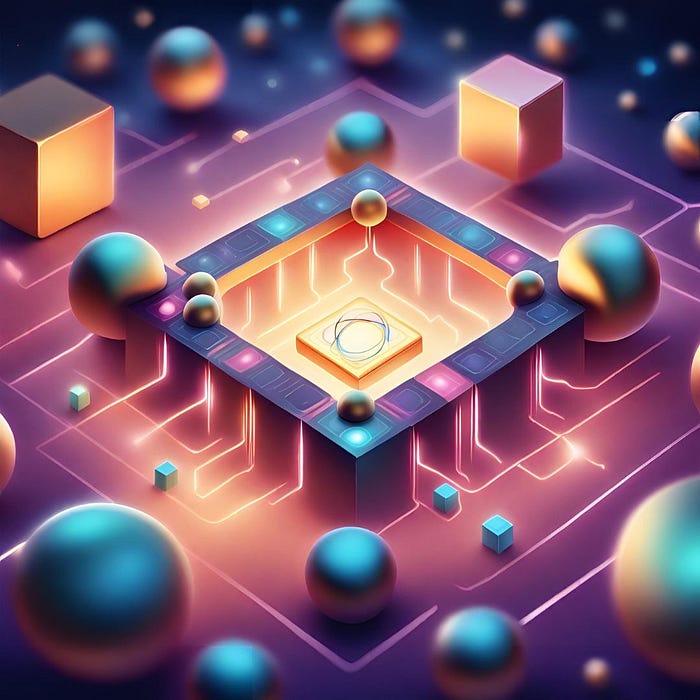Understanding Qubits and Bits: A Deep Dive into Quantum Computing
Written on
Introduction to Classical and Quantum Bits
In computing, bits have served as the essential units of information for many years. However, with the rise of quantum computing, a new type of bit has emerged: the quantum bit, or qubit. This discussion will examine the intriguing differences and resemblances between traditional bits and qubits.
Classical Bits: The Foundation of Traditional Computing
In classical computing, a bit represents the simplest unit of information, capable of existing in one of two states: either 0 or 1. Every piece of data, every command, and every file on your device is ultimately represented as sequences of these bits. Classical computers process these bits using logic gates such as AND, OR, and NOT, which take one or two bits as input to generate a new bit as output.
Quantum Bits: The Core of Quantum Computing
Quantum computing introduces a revolutionary concept: the quantum bit, or qubit. Unlike classical bits, which can be strictly 0 or 1, qubits can occupy both states simultaneously due to a phenomenon known as superposition. Quantum computers utilize quantum gates to manipulate qubits, creating intricate states that represent a superposition of both 0 and 1.
Superposition and Entanglement: Key Properties of Qubits
Two fundamental properties set qubits apart from classical bits: superposition and entanglement.
Superposition enables qubits to exist in multiple states at once, allowing a quantum computer with several qubits to represent and process a vast array of combinations simultaneously.
Entanglement, another quantum property, involves pairs or groups of qubits becoming interconnected. In an entangled state, the status of one qubit is directly tied to another, regardless of the distance separating them.
The Extraordinary Power of Qubits
The potential of qubits is derived from their ability to symbolize numerous states concurrently and influence one another instantaneously through entanglement. This unique capability allows quantum computers to process information in ways that classical computers cannot achieve. For instance, a quantum computer has the theoretical advantage of factoring large numbers more efficiently than a traditional computer, which has significant implications for fields such as cryptography, where the difficulty of factoring large numbers is key to data security.
Challenges in Quantum Computing
Despite the immense potential of qubits, leveraging their power presents substantial hurdles. Qubits are extremely sensitive and can easily be disturbed or lose their coherent state due to environmental factors. One of the main challenges in quantum computing is maintaining the qubits' state long enough to perform calculations. Additionally, constructing quantum gates that manipulate qubits without causing decoherence remains a significant obstacle. Current quantum computers face limitations due to these factors and can only execute basic computations.
Key Comparisons between Qubits and Bits
- Classical bits are the fundamental units of information in traditional computing, existing in either state 0 or 1.
- Quantum computing introduces qubits, which can exist in both states simultaneously thanks to superposition.
- Superposition allows qubits to embody multiple states at once, enabling a quantum computer to represent and process extensive combinations concurrently.
- Entanglement links pairs or groups of qubits, where the state of one qubit is contingent upon the state of another, regardless of distance.
- The remarkable power of qubits stems from their capacity to represent multiple states and their instantaneous influence on one another through entanglement.
- Despite their potential, the fragile nature of qubits and the challenge of maintaining their state presents significant barriers.
Conclusion
While classical bits and qubits share some fundamental similarities, they also exhibit profound differences. The unique properties of superposition and entanglement endow qubits with remarkable potential, yet they also introduce considerable challenges. As advancements in quantum computing continue, we may eventually learn to fully leverage the capabilities of qubits. Until then, both classical bits and quantum bits will remain vital in our ongoing journey to understand computing.

Chapter 1: The Basics of Qubits and Bits
In the video "Qubits vs Bits: The Kickback Effect," we explore the fundamental differences between classical bits and quantum bits, shedding light on their unique properties and implications for computing.
Chapter 2: Understanding Quantum Computing
The video "BIT VS QUBIT- A Beginner's Guide to Quantum Computing" offers an accessible introduction to the concepts of bits and qubits, perfect for those new to the topic.
Disclosure: This article was created with assistance from Bing AI, a Microsoft tool that generates content based on prompts. While efforts have been made to ensure the accuracy and originality of this content, readers are encouraged to verify any information before making decisions based on it. The opinions expressed herein are generated by Bing AI and do not necessarily represent the official stance of any organization.